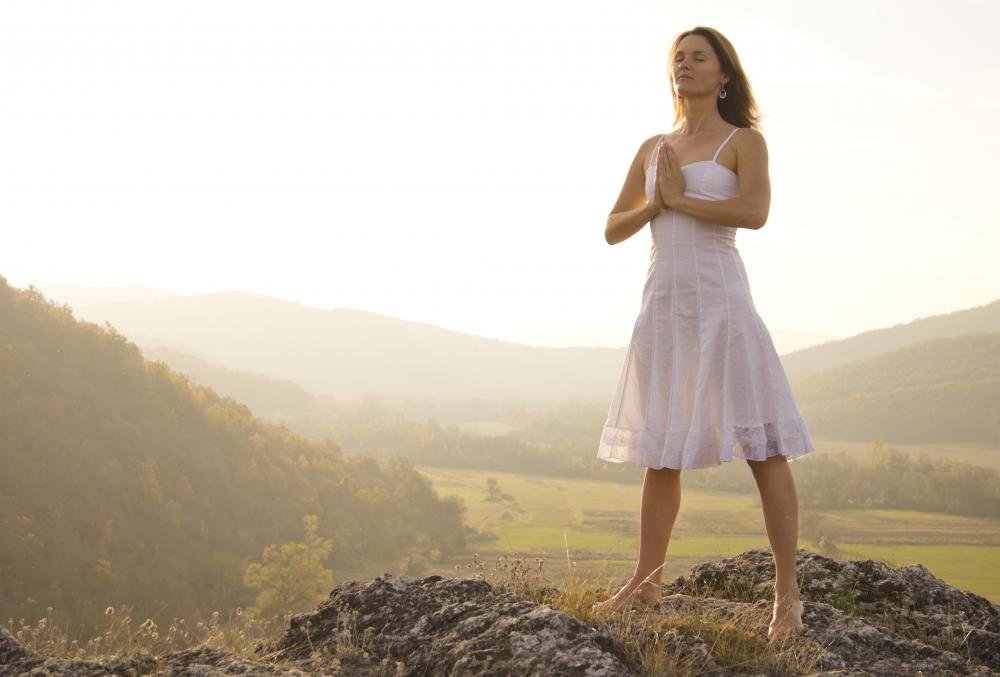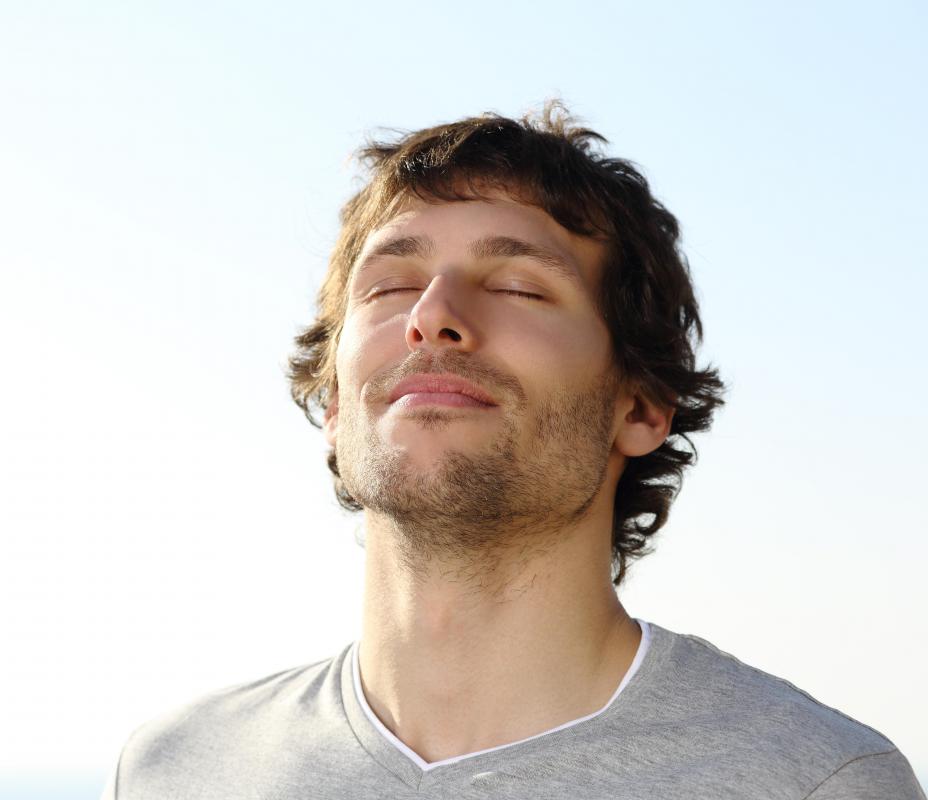At WiseGEEK, we're committed to delivering accurate, trustworthy information. Our expert-authored content is rigorously fact-checked and sourced from credible authorities. Discover how we uphold the highest standards in providing you with reliable knowledge.
What Is Dynamic Meditation?
The Indian spiritual leader Bhagwan Shree Rajneesh, who developed the nickname "Osho" in the late 1980s, is a mystic teacher renowned worldwide for secular religious teachings and active meditation techniques. One of these techniques is known as dynamic meditation, an hour-long series of activities said to help release tension and tap into subconscious pressure. Osho, who died in 1990, lives on at a Mumbai meditation center that bears his name. There, participants can experience a meditation style that meanders physically and psychologically through the forest of clutter in the brain. The catharsis is said to ease human frustration into healthier channels.
As one of the more common forms of active meditation, the benefits of dynamic meditation spread worldwide with Osho's various speaking engagements and retreat initiatives. Employing tenets of western psychology by exposing negative patterns and thoughts before meditation sessions, the method spread to American meditators when Osho founded an Oregon satellite in the early 1980s. This ultimately led to hardship, immigration violations, and a return to India in 1985. Nevertheless, the seeds of Osho's methods were planted in cities across the globe.

Dynamic meditation is not a complicated technique, though it is recommended to be practiced in the morning due to its energizing effects. It does require, however, the proper surroundings in which the meditator can feel comfortable expressing instinctual sounds and movements. Prying eyes might curtail natural meditative responses. For this reason, it is helpful to seek a private environment or one populated with like-minded meditators. Otherwise, a silent version of dynamic meditation can be practiced.

The first phase is 10 minutes of chaotic breathing through the nose, concentrating only on the exhale, while standing or sitting, slowly building toward a frenzy-like state. This is followed by 10 minutes of expressing whatever emotion is most predominant at the time, through whatever activity best illustrates that emotion. That could mean dancing to illustrate joy or screaming erratically to express frustration or loss. The idea is to act deliberately, yet instinctively.

The remaining phases bring the meditator back to the conscious state, through continued action yet in a controlled manner. After exactly 20 minutes, a 10-minute period begins of gently jumping up and down while chanting a mantra like "Ha Ha Ha." This is followed by 15 minutes of freezing in place, then another 15 minutes of improvisational dance. It is during this final phase in which meditators should attempt to think on ideas or situations that bring joy and an abiding sense of wholeness.

For those who do not know if dynamic meditation is for them, Osho's other active meditation methods may offer alternatives. Some methods, like a kundalini technique, are much more static and calming. This method is divided into four, 15-minute periods: stretching and shaking; dancing; sitting; then lying down.
AS FEATURED ON:
AS FEATURED ON:














Discuss this Article
Post your comments